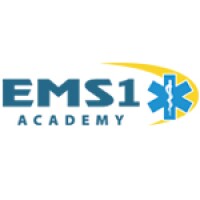This article originally appeared in the April 4, 2019 issue of the Paramedic Chief Leadership Briefing, Employee suicide prevention | Heads-up CPR | ET3 Top 10. Read the full briefing and add the Paramedic Chief eNewsletter to your subscriptions.
The EMS1 Academy features “Return to Spontaneous Circulation Patient,” a 1-hour accredited course for ALS providers. Visit the EMS1 Academy to learn more and schedule a demo.
By William F. Toon
While there are some EMS agencies that have implemented some form or variation of a heads-up CPR protocol, caution is absolutely warranted as the concept of heads-up CPR is based on animal studies alone [1]. There is no clear consensus for the best approach of this new practice in an out-of-hospital setting.
EMS has all too often fallen victim to new devices or fads touted to make things better for the patient, provider or agency. By now, EMS leaders should know the relevance of using a formalized process to thoroughly evaluate anything new for their service. When dealing with patient care, carefully searching and reading the scientific literature should be an essential part of the process. It’s important that no patient be harmed by the adoption of any unproven practice, like heads-up CPR.
What is heads-up CPR?
It is not just simply elevating the patient’s head. The greatest benefit shown to date, in animal studies only, is for heads-up CPR to follow a specific sequence of implementation:
-
First, chest compressions are initiated with the patient in the supine position while utilizing an impedance-threshold-device (ITD) plus active compression/ decompression (ACD) CPR.
-
Second, two minutes of ACD-CPR + ITD in the supine position is essential to prime the cardiocerebral blood flow.
-
Finally, the head and thorax are slowly elevated 30 degrees in a stepwise fashion.
When utilizing this entire process, a two-fold or more increase in blood flow to the brain over the supine position has reportedly been demonstrated, again, in animal studies only [2].
There are variations to the process, such as just ACD-CPR + ITD or mechanical CPR (piston or load-distributing band chest compression device) + ITD with some type of head- chest-up or complete reverse Trendelenburg. All these variations are also reported to show an increase in blood flow to the brain over the supine position [2, 6, 7, 9, 10].
What to do before adding a new cardiac arrest procedure
EMS leaders should, at a minimum, consider the following steps before implementing any new cardiac arrest procedure/ practice:
-
Have a system in place to collect cardiac arrest data following the Utstein Resuscitation Registry Templates for Out-of-Hospital Cardiac Arrest [14].
-
A better option is to actively participate in Cardiac Arrest Registry to Enhance Survival or CARES. It is essential to know what you are doing now and how well you are doing it. Only then, when a new procedure or practice is put into place, can you know if there is improvement, and no change or harm being caused.
-
Focus on the chain of survival, particularly the components EMS can most greatly impact [15, 16]:
-
Recognition and activation. Dispatcher chest compression-only CPR
-
Early CPR. Bystanders performing chest compression-only CPR
-
Rapid defibrillation. Placement of AEDs in your community
-
Basic and advanced EMS. All EMS providers functioning as a well-oiled team to deliver high-quality CPR. High-quality CPR focuses on proper rate, proper depth, full chest recoil and minimizing any interruptions < 10 seconds.
-
-
Continuous training is essential to learn, maintain and improve CPR performance. New research shows that short duration training on manikins with real-time feedback completed monthly is the most effective approach [17].
What does the research say about heads-up CPR?
Developing an opinion based on the science or lack thereof of any emerging procedure, skill or tool is vital. Carefully research and read all the references found at the end of this article.
The majority of the studies on heads-up CPR have been done using a pig model [2, 6-9]. One uses a human cadaver model [2]. Some other related studies look at using the impedance-threshold-device with active-compression/ decompression CPR or the impedance-threshold-device with mechanical (piston type) CPR with and without head elevation [6, 9, 10, 12, 13]. In a literature review, no studies were found utilizing a load-distributing band chest compression device (AutoPulse) for heads-up CPR.
None of the studies appear to be a well-designed, out-of-hospital study comparing conventional high-performance CPR versus any of the current models of heads-up CPR. In the case of heads-up CPR, it seems clear that EMS should wait for more definitive studies. Some of the information written there includes the following:
-
“There are also well-meaning zealots in the field of resuscitation who believe in early implementation of novel ideas. This zeal is born from frustration knowing that in many cities the survival to discharge rates remain very poor. Head up CPR, both in animals and in this human model, was beneficial only when coupled with ACD and the ITD. Thus, it is not just HUP CPR, it is device-assisted HUP CPR that appears to be beneficial. Maybe a name change of the technique would prevent misconception or misapplication of the technique” [3].
-
“There are no silver bullets in resuscitation; simply elevating the head during CPR will not improve neurological outcomes” [5]
-
“In this experimental animal model of BLS CPR, the head-up as compared to the standard supine position, despite increasing CPP, did not improve parameters of cerebral oxygenation or cerebral metabolism, as measured by multimodal neuromonitoring techniques” [9].
It’s time that EMS providers, leaders and agencies stop falling victim to models and devices touting the ability to save cardiac arrest patients. We will get much further by acting with caution, even skepticism, and asking for real proof from well-designed research studies.
About the author
William F. Toon, EdD., NRP, has been an EMS provider and educator since 1975. Bill has had experience with many different EMS delivery models, including volunteer, non-profit, for-profit, hospital, governmental (third service and fire department), fly car, ground ambulance and air ambulance.
References
(1) Pepe PE, Scheppke KA, Antevy PM, Crowe RP, Millstone D, Coyle C, Prusansky C, Garay S, Ellis R, Fowler RL, Moore JC. Confirming the Clinical Safety and Feasibility of a Bundled Methodology to Improve Cardiopulmonary Resuscitation Involving a Head-Up/Torso-Up Chest Compression Technique. Crit Care Med. 2019 Mar;47(3):449-455.
(2) Moore JC, Holley J, Segal N, Lick MC, Labarère J, Frascone RJ, Dodd KW, Robinson AE, Lick C, Klein L, Ashton A, McArthur A, Tsangaris A, Makaretz A, Makaretz M, Debaty G, Pepe PE, Lurie KG. Consistent head up cardiopulmonary resuscitation haemodynamics are observed across porcine and human cadaver translational models. Resuscitation. 2018 Nov;132:133-139.
(3) Strobos NC. Debunking another CPR myth: Lay the patient flat, or head up CPR? Resuscitation. 2018 Nov;132:A1-A2.
(4) Moore JC, Segal N, Debaty G, Lurie KG. The “do’s and don’ts” of head up CPR: Lessons learned from the animal laboratory. Resuscitation. 2018 Aug;129:e6-e7.
(5) Putzer G, Martini J, Helbok R, Mair P. Reply to “The Do’s and Don’ts” of head up CPR: Lessons learned from the animal laboratory. Resuscitation. 2018 Aug;129:e8.
(6) Putzer G, Braun P, Martini J, Niederstätter I, Abram J, Lindner AK, Neururer S, Mulino M, Glodny B, Helbok R, Mair P. Effects of head-up vs. supine CPR on cerebral oxygenation and cerebral metabolism - a prospective, randomized porcine study. Resuscitation. 2018 Jul;128:51-55.
(7) Moore JC, Segal N, Lick MC, Dodd KW, Salverda BJ, Hinke MB, Robinson AE, Debaty G, Lurie KG. Head and thorax elevation during active compression decompression cardiopulmonary resuscitation with an impedance threshold device improves cerebral perfusion in a swine model of prolonged cardiac arrest. Resuscitation. 2017 Dec;121:195-200.
(8) Kim T, Shin SD, Song KJ, Park YJ, Ryu HH, Debaty G, Lurie K, Hong KJ. The effect of resuscitation position on cerebral and coronary perfusion pressure during mechanical cardiopulmonary resuscitation in porcine cardiac arrest model. Resuscitation. 2017 Apr;113:101-107.
(9) Ryu HH, Moore JC, Yannopoulos D, Lick M, McKnite S, Shin SD, Kim TY, Metzger A, Rees J, Tsangaris A, Debaty G, Lurie KG. The Effect of Head Up Cardiopulmonary Resuscitation on Cerebral and Systemic Hemodynamics. Resuscitation. 2016 May;102:29-34.
(10) Debaty G, Shin SD, Metzger A, Kim T, Ryu HH, Rees J, McKnite S, Matsuura T, Lick M, Yannopoulos D, Lurie K. Tilting for perfusion: head-up position during cardiopulmonary resuscitation improves brain flow in a porcine model of cardiac arrest. Resuscitation. 2015 Feb;87:38-43.
(11) Zadini F, Newton E, Abdi AA, Lenker J, Zadini G, Henderson SO. Use of the trendelenburg position in the porcine model improves carotid flow during cardiopulmonary resuscitation. West J Emerg Med. 2008 Nov;9(4):206-11.
(12) Aufderheide TP1, Frascone RJ, Wayne MA, Mahoney BD, Swor RA, Domeier RM, Olinger ML, Holcomb RG, Tupper DE, Yannopoulos D, Lurie KG. Standard cardiopulmonary resuscitation versus active compression-decompression cardiopulmonary resuscitation with augmentation of negative intrathoracic pressure for out-of-hospital cardiac arrest: a randomized trial. Lancet. 2011 Jan 22;377(9762):301-11.
(13) Wolcke BB1, Mauer DK, Schoefmann MF, Teichmann H, Provo TA, Lindner KH, Dick WF, Aeppli D, Lurie KG. Comparison of standard cardiopulmonary resuscitation versus the combination of active compression-decompression cardiopulmonary resuscitation and an inspiratory impedance threshold device for out-of-hospital cardiac arrest. Circulation. 2003 Nov 4;108(18):2201-5.
(14) Perkins GD, Jacobs IG, Nadkarni VM, Berg RA, Bhanji F, Biarent D, Bossaert LL, Brett SJ, Chamberlain D, de Caen AR, Deakin CD, Finn JC, Gräsner JT, Hazinski MF, Iwami T, Koster RW, Lim SH, Huei-Ming Ma M, McNally BF, Morley PT, Morrison LJ, Monsieurs KG, Montgomery W, Nichol G, Okada K, Eng Hock Ong M, Travers AH, Nolan JP; Utstein Collaborators. Cardiac arrest and cardiopulmonary resuscitation outcome reports: update of the Utstein Resuscitation Registry Templates for Out-of-Hospital Cardiac Arrest: a statement for healthcare professionals from a task force of the International Liaison Committee on Resuscitation (American Heart Association, European Resuscitation Council, Australian and New Zealand Council on Resuscitation, Heart and Stroke Foundation of Canada, InterAmerican Heart Foundation, Resuscitation Council of Southern Africa, Resuscitation Council of Asia); and the American Heart Association Emergency Cardiovascular Care Committee and the Council on Cardiopulmonary, Critical Care, Perioperative and Resuscitation. Circulation. 2015 Sep 29;132(13):1286-300.
(15) https://cpr.heart.org/AHAECC/CPRAndECC/AboutCPRFirstAid/CPRFactsAndStats/UCM_475731_CPR-Chain-of-Survival.jsp
(16) Berg DD, Bobrow BJ, Berg RA. Key components of a community response to out-of-hospital cardiac arrest. Nat Rev Cardiol. 2019 Mar 11
(17) Robert Anderson, Alexandre Sebaldt, Yiqun Lin, Adam Cheng. Optimal training frequency for acquisition and retention of high-quality CPR skills: A randomized trial. Resuscitation. 2019 Feb;135:153-161.













